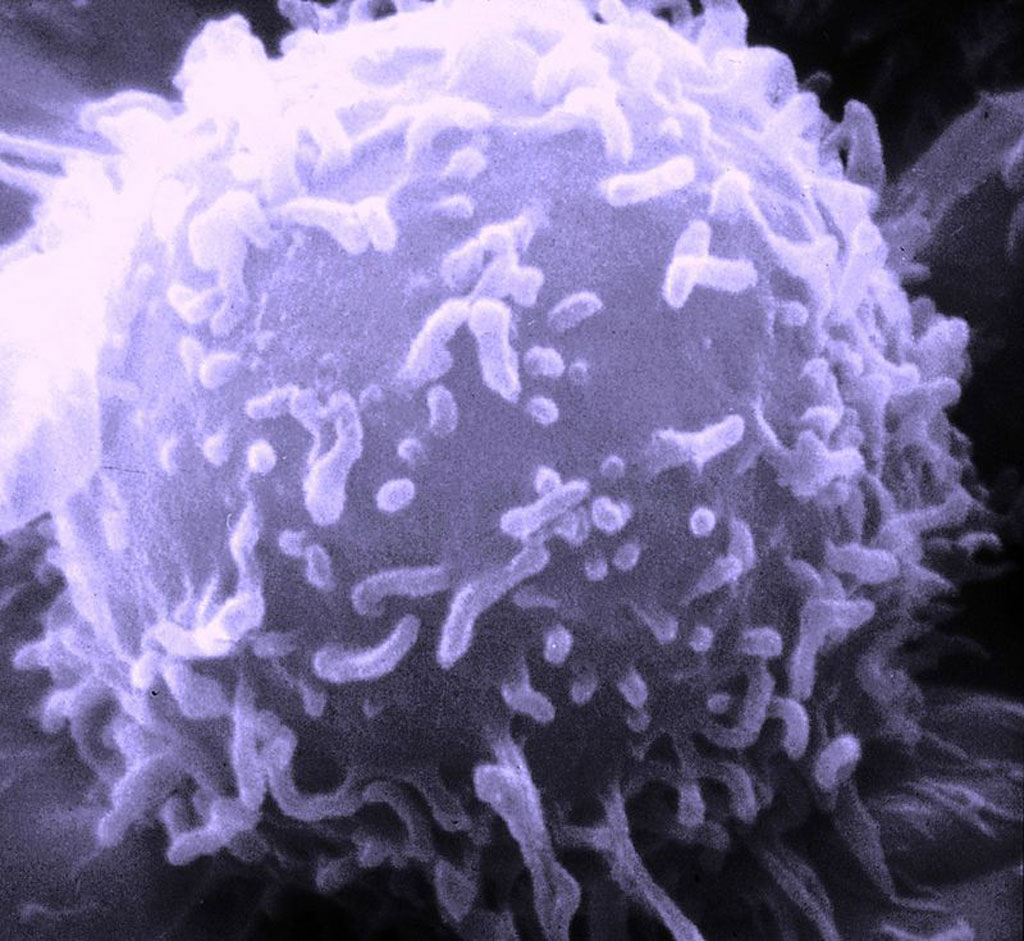MicroRNAs Play a Critical Role in B Cell Maturation
By Gerald M. Slutzky, PhD
Posted on 07 Dec 2016
A recent paper highlighted the important role of microRNAs in the maturation of the immune system's B lymphocytes (B cells).Posted on 07 Dec 2016
MicroRNAs (miRNAs) are a small noncoding family of 19- to 25-nucleotide RNAs that regulate gene expression by targeting mRNAs in a sequence specific manner, inducing translational repression or mRNA degradation, depending on the degree of complement between miRNAs and their targets. Many miRNAs are conserved in sequence between distantly related organisms, suggesting that these molecules participate in essential processes. In fact, miRNAs have been shown to be involved in the regulation of gene expression during development, cell proliferation, apoptosis, glucose metabolism, stress resistance, and cancer.

Image: A scanning electron microscopic (SEM) image of a single human lymphocyte (Photo courtesy of Wikimedia Commons).
B cell development is a tightly regulated process dependent on sequential rearrangements of the genetic loci that encode the immunoglobulin antigen receptor. To better understand the role of miRNAs in the orchestration of B cell development, investigators at the Technion-Israel Institute of Technology (Haifa, Israel) eliminated all miRNAs at the earliest stage of B cell development by conditionally targeting the enzymes critical for miRNA synthsesis in early B cell precursors.
The investigators reported in the November 22, 2016, issue of the journal Cell Reports that absence of any one of these enzymes led to a block at the pro-B cell to pre-B cell transition due to increased apoptosis and a failure of pre-B cells to proliferate. Further analysis revealed that miRNAs were critical for the regulation of the PTEN-AKT-FOXO1 molecular pathway that controlled Rag expression during B cell development. Regulation of PI3K (Phosphoinositide 3-kinase) signaling by miRNAs was essential for keeping Rag expression in check.
The recombination-activating genes (RAGs) encode enzymes that play an important role in the rearrangement and recombination of the genes of immunoglobulin and T cell receptor molecules. There are two recombination-activating gene products known as RAG-1 and RAG-2, whose cellular expression is restricted to lymphocytes during their developmental stages. RAG-1 and RAG-2 are essential to the generation of mature B and T lymphocytes.
“Appropriate PI3K activity determines the positive and the negative selection of B cells,” explained contributing author Dr. Doron Melamed, professor of immunology at the Technion-Israel Institute of Technology. “Activation of PI3K is balanced by another biochemical process in the pathway called Pten. While the extent of the “cross talk” between PI3K and Pten has been unclear, our work has demonstrated that a microRNA (miRNA), which regulates gene expression, can sensitize the process for B cells turning cancerous and also enable them to evade cell death.”
Related Links:
Technion-Israel Institute of Technology













